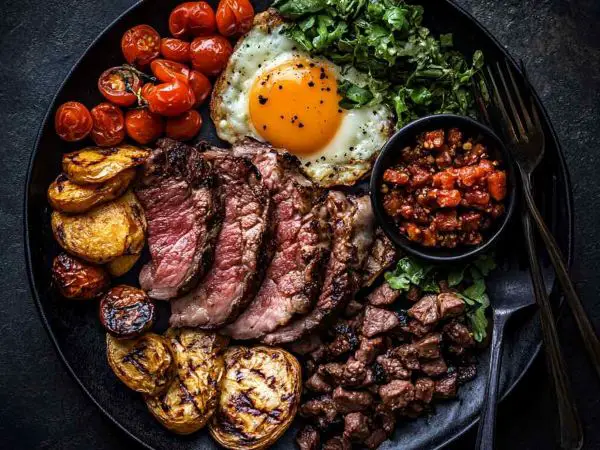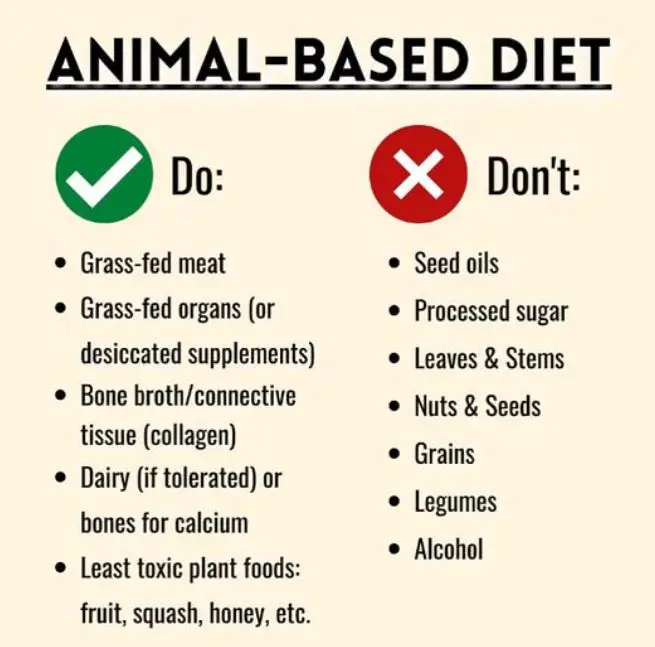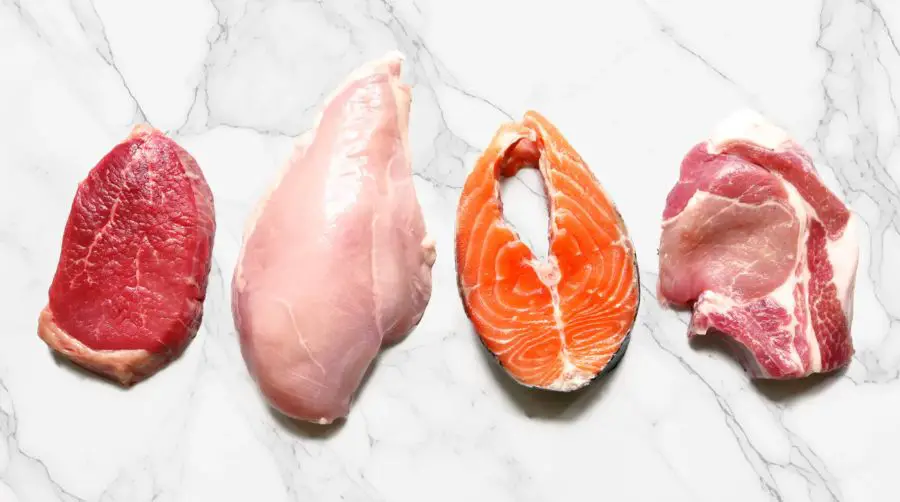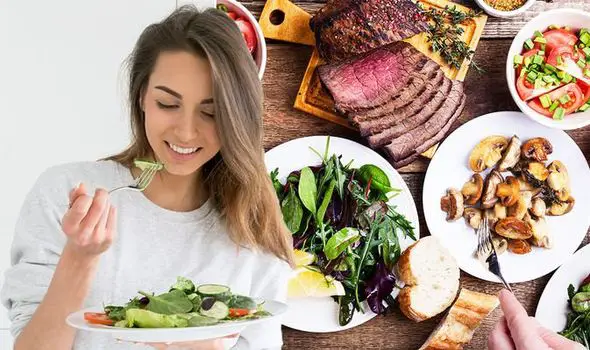Recently, conversations surrounding nutrition have shifted back to whole foods with nutrients. Food like the ones included in plant-based diets has become popular, but many are now looking for more nutrient-dense foods from an animal-based diet for the nutrient density, ease of use, and healthfulness. Foods from an animal-based diet provide a focus on protein, fats, and vitamins that human biology is designed to consume regularly.

If you ever wondered what foods animal-based diets include, how they affect the body, and why many people love animal-based diets, then you are going to want to read this guide.
What Is an Animal-Based Diet?
An animal-based diet focuses on foods that come from animals—meat, fish, eggs, and dairy—while minimizing, or eliminating, processed foods and sometimes even plant foods—grains, legumes, and even vegetables. The line of thought here is that we nourish our bodies with foods that humans have been consuming for thousands of years, and a diet filled with complete nutrition.

This eating pattern is sometimes associated with carnivore diets, ketogenic diets, or paleo-inspired lifestyles, but it does not always mean we eliminate plants. Some people may choose to include fruit or honey in their diet to keep balance in the diet, but the foundation is still the same: striving for a diet rich in nutrient-dense, animal-based foods.
Foundational Food Types of an Animal-Based Diet
Here is a breakdown of the main food types that make up an animal-based diet:

1. Red Meat
- Examples: Beef, lamb, bison, venison, goat
- Nutrients: High in protein, iron, zinc, vitamin B12, and creatine. Red meat is one of the biggest staples of animal-based diets. Beef, especially grass-fed beef, is highly valued for its omega-3 content, and, by containing higher levels of antioxidants such as vitamin E, helps to keep the omega-3 ratios in check.
2. Poultry
- Examples: Chicken, turkey, duck, quail
- Nutrients: Lean protein, selenium, B vitamins. Light protein choices like chicken and turkey are often recommended when people are cutting down on fat because they can benefit from a high-protein diet without having too much fat.
3. Seafood
- Examples: Salmon, sardines, mackerel, cod, shellfish
- Nutrients: omega-3 fatty acids, iodine, vitamin D, selenium. Fish is essential for brain and heart health. Oily fish like salmon or sardines work best for health because they contain high levels of DHA and EPA.
4. Eggs
- Examples: Chicken eggs, duck eggs, quail eggs
- Nutrients: Complete protein, choline, vitamin D, lutein. Eggs are one of the most versatile animal-based diet foods. They have just about every vitamin and mineral the body needs, making them a bona fide superfood.
5. Dairy Products
- Examples: Milk, yogurt, cheese, cream, butter
- Nutrients: Calcium, vitamin K2, protein, probiotics (from fermented dairy). Full-fat, minimally processed dairy is generally considered due to its nutrient density and healthy fats, and many dieters opt for raw or fermented dairy, as it can be easier to digest.
6. Organ Meats
- Examples: Liver, heart, kidney, bone marrow
- Nutrients: Super rich in vitamins A, B12, folate, iron, and CoQ10. Organ meats, often referred to as “nature’s multivitamins,” pack a nutritional punch that is hard to find in the modern-day supplement aisle. A small serving contains enough vitamins and minerals to outshine most supplements you can buy today.
7. Animal Fats
- Examples: Tallow, lard, ghee, duck fat
- Nutrients: Saturated fat, monounsaturated fat, fat-soluble vitamins (A, D, E, K). These traditional fats are coming back into the spotlight as people realize their function for hormone balance, energy, and nutrition absorption.
Benefits of Consuming Animal-Based Diet Foods
- Nutrient Density
Animal-based diet foods have complete proteins, containing all the essential amino acids of dietary protein, and vitamins and minerals that are highly bioavailable. vs plant-based nutrients that must undergo conversion into usable and absorbable compounds by our bodies, animal nutrient foods are ready for us to use, as is. - Supports Muscle Growth and Repair
Protein from animal-based foods is unmatched when it comes to repairing and maintaining muscle. This diet is advantageous for athletes or any population concerned with strength. - Improved Brain and Heart Health
Foods from animal sources contain omega-3s in fish, choline in eggs, and vitamin B12 in red meat. These nutrients positively support your brain functioning and your heart health. - Stable Energy Levels
Fats and proteins from animal sources provide you with steady, enduring energy without the crash of blood sugar spikes that generally accompany processed carbohydrates. - Simplicity and Satiety
Many find that an animal-based diet can be easier to follow because you tend to feel fuller longer, alleviating cravings and avoiding binge eating.
Potential Drawbacks
Although there are many positives, an animal-based diet is not necessarily right for everyone. Here are a few things to keep in mind:
- Digestive Adjustments: It might take some time to adjust to the lack of fiber in most food. Some might have to take some time for the body to adapt.
- Sourcing Quality: Conventional meats have added hormones or antibiotics. It would be best to eat high-quality meats, like grass-fed, pasture-raised cattle, or wild-caught fish.
- Cost: While it sounds easy to adhere to an animal-based diet, animal-based diet foods may be more pricey than plant-based staples like grains or legumes.
- Balance: Some may feel better just including a little fruit or honey to balance the energy levels, as well as assisting in micronutrient consumption.
Starting Tips For An Animal-Based Diet
- Focus on Quality
When possible, choose grass-fed beef, pasture-raised chicken, or wild-caught fish. Quality is a huge factor in nutrient quality. - Try Variety
Don’t just eat steak every day. Have some fish, eggs, dairy, and organ meat in order to have a good mix of nutrients. - Don’t be Afraid of Fat
Animal fat is healthy fat, required for the production of hormones and brain functioning. Use butter, ghee, or tallow for cooking and avoid processed oils. - Hydrate and Balance Electrolytes During a transition to animal-based eating, hydration and your electrolytes (sodium, potassium, magnesium) are extremely important to avoid fatigue.
- Stick With What Works For You
Some people excel with a strict animal-based diet, while others do well with a little fruit or honey—find what works best for you.
Animal-Based Diet Meal Ideas
Here are a few simple ways to build meals on animal-based diet foods:
- Breakfast: Scrambled eggs cooked in butter with a side of smoked salmon.
- Lunch: Grilled chicken thighs topped with melted cheese and a mug of bone broth.
- Dinner: Grass-fed ribeye steak with sautéed liver and a clump full of herbed butter.
- Snack: Hard-boiled eggs or pieces of aged cheese.
- Treat: Greek yogurt with a drizzle of raw honey (if including a small amount of carbs).
In Closing
Animal-based diet foods are an important topic of conversation in nutrition, and clearly for many good reasons. They are very nutrient-dense, satiating, and in many ways, an accepted part of our ancestral eating patterns that were historically unsustainable to humans. However, whether you entirely go carnivore or just want to increase animal-based foods in your meals, there can sometimes be a significant benefit.
All dietary practices vary based on individual lifestyle. The most significant in dietary patterns is listening to your body, selecting the highest quality foods, and finding the balance best for you. The catalyst for most people in jumping into an animal-based diet could be increased energy, fat loss, improving muscle health, simplification or just lower daily stress levels.


